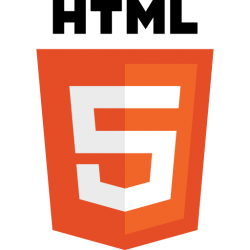 Let’s just face the facts: Flash is dying, platform/browser agnostic development is in, and Windows 8 is bringing HTML5/JavaScript to desktop development. Love it or hate it, as a developer you’ll probably need to familiarize yourself with the finer points of HTML5 and JavaScript-driven application design, but where does a person start? Traditionally HTML and JavaScript are used for website markup and making pretty transition effects, so how do we get from high school level web design to making HTML5/JS a realistic front-end for enterprise class applications?
Let’s just face the facts: Flash is dying, platform/browser agnostic development is in, and Windows 8 is bringing HTML5/JavaScript to desktop development. Love it or hate it, as a developer you’ll probably need to familiarize yourself with the finer points of HTML5 and JavaScript-driven application design, but where does a person start? Traditionally HTML and JavaScript are used for website markup and making pretty transition effects, so how do we get from high school level web design to making HTML5/JS a realistic front-end for enterprise class applications?
HTML5/JS frameworks are beginning to pop up as viable development environments for the entire range of web-based applications, from desktop to mobile. Here are four HTML5/JS tools that will turbocharge your apps and keep you savvy with this new trend in development.
1. Yahoo! Cocktails
 Yahoo recently announced its newest mix of HTML5, CSS3, and JavaScript tools, and believe it or not, Yahoo still knows how to bring decent services to the table. Cocktails brings existing Yahoo! services like YQL and YUI together with HTML5/JavaScript tools for rapid multi-device and multi-platform development. The most impressive aspect of Cocktails is its integration with Yahoo!’s Mojito, which allows JavaScript functionality for your apps even if the device has JavaScript disabled by running scripts on the server side. Yahoo! isn’t dead yet!
Yahoo recently announced its newest mix of HTML5, CSS3, and JavaScript tools, and believe it or not, Yahoo still knows how to bring decent services to the table. Cocktails brings existing Yahoo! services like YQL and YUI together with HTML5/JavaScript tools for rapid multi-device and multi-platform development. The most impressive aspect of Cocktails is its integration with Yahoo!’s Mojito, which allows JavaScript functionality for your apps even if the device has JavaScript disabled by running scripts on the server side. Yahoo! isn’t dead yet!
2. SproutCore
SproutC![]() ore is an open-source set of tools built using MVC (model-view-controller) architecture for creating universally accessible, scalable, and speeding applications. The team that created SproutCore offers many easy-to-follow guides for beginners, and the well-established community of developers make troubleshooting relatively pain-free. Of the frameworks I’ve encountered, SproutCore is the most polished…and it doesn’t hurt that it’s free.
ore is an open-source set of tools built using MVC (model-view-controller) architecture for creating universally accessible, scalable, and speeding applications. The team that created SproutCore offers many easy-to-follow guides for beginners, and the well-established community of developers make troubleshooting relatively pain-free. Of the frameworks I’ve encountered, SproutCore is the most polished…and it doesn’t hurt that it’s free.
3. LimeJS
 If your forte is creating web-based games, LimeJS is a framework for rapid development of native-experience touchscreen apps for mobile devices or desktop browsers. This simple but flexible tool set is free to download and takes the headaches out of creating rich cross-platform user experiences with standardized code and solid community support.
If your forte is creating web-based games, LimeJS is a framework for rapid development of native-experience touchscreen apps for mobile devices or desktop browsers. This simple but flexible tool set is free to download and takes the headaches out of creating rich cross-platform user experiences with standardized code and solid community support.
4. Sencha
 The only non-free framework on this list, Sencha is meant for industrial strength app development. Sencha offers an array of tools like a visual designer, rich spreadsheet support, CSS3 animator, and skinning to put a unique look and feel to your application. The Sencha API allows for rapid development for touchscreens or standard desktops, and while it isn’t free to download, Sencha provides professional support and training for its customers. User interface, app functionality, and data connectivity — Sencha does it all.
The only non-free framework on this list, Sencha is meant for industrial strength app development. Sencha offers an array of tools like a visual designer, rich spreadsheet support, CSS3 animator, and skinning to put a unique look and feel to your application. The Sencha API allows for rapid development for touchscreens or standard desktops, and while it isn’t free to download, Sencha provides professional support and training for its customers. User interface, app functionality, and data connectivity — Sencha does it all.
Conclusion
Will HTML5/JavaScript bring about the downfall .NET/WPF app development? Not anytime soon. But if you’re looking to bring your application to as many users and devices as possible, HTML5/JS is your ticket to fame. These frameworks will get your started, and if you have a favorite not listed here (there are many), please leave it in the comments.


Leave a Reply
You must be logged in to post a comment.